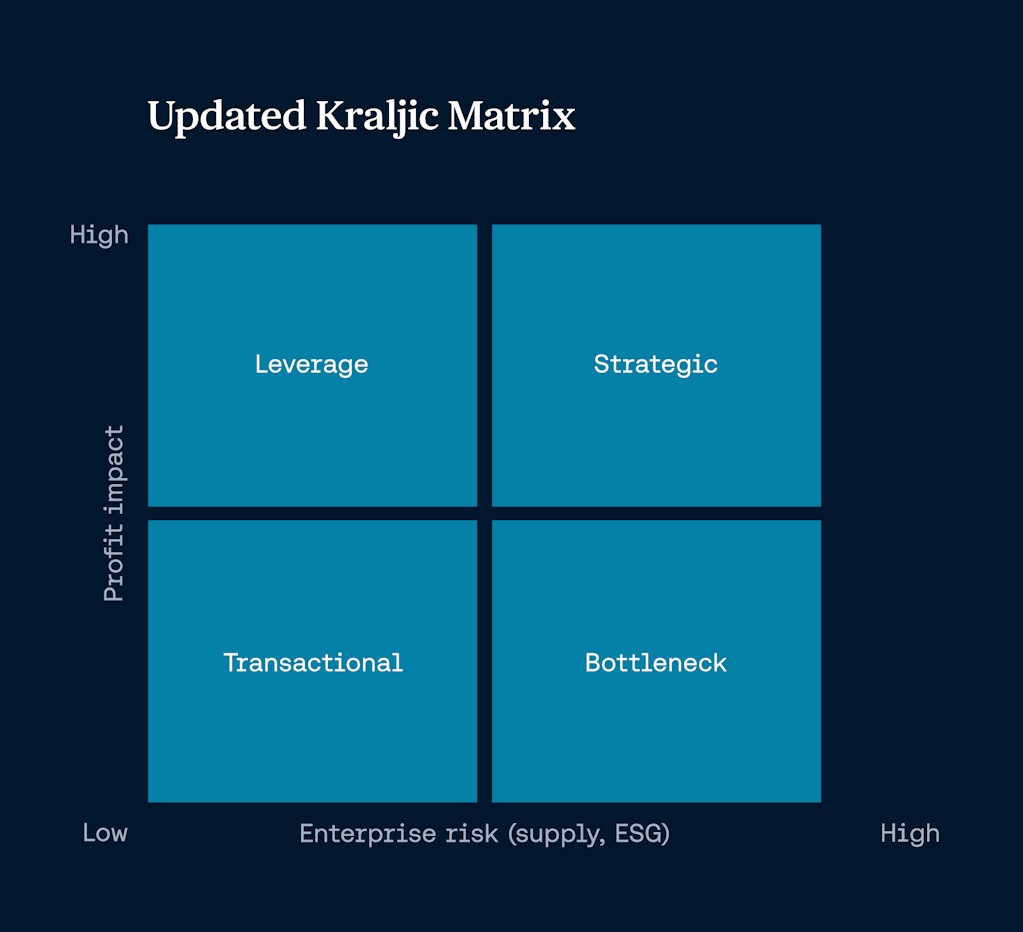
4 ways procurement can drive ESG advancement
Tags
When it comes to an organisation’s brand and reputation, Environmental, Social and Corporate Governance (ESG) issues are no longer a nice to have – they are table stakes. Consumers, employees, and investors alike are more sensitive than ever to issues such as climate change, slave labour, and racial and gender equality. In a world full of choice, stakeholders vote with their feet, and decide where to buy, work and invest based on the ethics of an organisation’s supply chain.
Here are four ways procurement leaders can ensure their supply chains align to the ESG agenda.
1. Leverage data to gain more insights from your supply chain
Procurement departments are well-positioned to lead on their organisation’s ESG agenda, drawing on their intimate knowledge of supply chains and cross-functional relationships with a range of internal stakeholders. As costs increase on a global scale, procurement teams have a great opportunity to add a different kind of value within their organisation by increasing efficiencies and de-risking operations.
The pandemic exposed supply chain bottlenecks around the world, highlighting the need for organisations to understand their upstream supply chain in greater depth than ever before. In addition to increased supply chain fragility, sustainability objectives have driven a global push towards net-zero goals, with organisations committing to disclose and drastically reduce their emissions. The Greenhouse Gas Protocol (GHG) defines emissions in 3 scopes.
The carbon footprint of purchased products and services falls within scope 3 and, due to being outside of an organisations’ control, is one of the most difficult challenges to address. It is important to note that scope 3 includes all upstream emissions from products and services purchased – not just emissions from immediate suppliers, and this is where procurement teams can have the most impact.
Organisations can understand the bottlenecks and pollutants within their supply chains by harvesting open data sources and 3rd party supplier databases or utilising supply chain mapping tools. These tools enable procurement teams to map their suppliers, highlighting supply chains with an overdependence on a geographical location or a key raw material, giving procurement teams greater insight and the ability to look strategically at their supply chains. This opens the door to de-risking the supply base and provides transparency, creating the optimum environment for procurement teams to select and promote sustainable suppliers.
2. Identify strategic vendors with refreshed supplier segmentation
A supplier segmentation matrix is a well-established tool for understanding the time and resources needed to maximise value in supply chains. Typically, the Kraljic matrix is used to plot profit impact (importance) against the supply risk, placing suppliers into four segments: transactional, leverage, bottleneck, and strategic. Although this model is recognised as a cornerstone of good category management, it does not incorporate established ESG principles.
Incorporating an additional ESG importance dimension highlights value-add suppliers by embedding ESG principles into a more complex model. An ESG dimension should incorporate all aspects of ESG including social governance criteria, for example minority or women-owned businesses. By applying an enhanced model, category and procurement managers can meet the evolving needs and priorities of a sustainable, conscious, and modern organisation.

3. Embed ESG into procurement processes with supplier onboarding
Supplier onboarding processes are designed to leverage economies of scale, channelling spend to strategic suppliers. However, they are often underdeveloped, with little control over how suppliers are onboarded, and overtly risk-focused, lacking a holistic approach. Many onboarding processes were designed prior to the huge focus shift towards sustainability and lack ESG considerations as a result.
Legacy onboarding processes may limit the scope of suitable supplies through restrictive criteria. Conversely, they may also fail to curb an organisation’s number of suppliers, resulting in diluted spend power. This is particularly apparent when, after making multiple acquisitions, the acquiring organisation needs to integrate several different ERP systems and processes – each carrying a cost in terms of spend, time, and resources.
Redesigning outdated supplier onboarding processes provides an opportunity for procurement teams to embed ESG principles, adjusting acceptance criteria to be more inclusive of ESG-compliant suppliers.
4. Increase transparency, innovate, and streamline through technology
Technological advances such as AI, blockchain, machine learning and digital twins can be leveraged to improve and simplify complex supply chains. A smart supply chain powered by digital technologies can rapidly respond to business needs, mitigate risks, and improve efficiencies in alignment with the ESG agenda – such as cutting down on waste or reducing emissions.
Whilst good ethics and sustainability should be prioritised by all organisational departments, procurement leaders are uniquely placed to promote the advancement of ESG. Procurement teams can benefit from taking a leading role on these opportunities.
With the International Sustainability Standards Board (ISSB) announcing in October 2022 that Scope 3 emissions will be included as part of required company disclosures, by getting ahead of the curve teams can gain well-earned recognition and visibility, and provide value beyond cost to their organisations.
Explore more







